If you happen to be in Nice or somewhere nearby in the south of France, a visit to the Aimé and Marguerite Maeght Foundation is a must. It is about a forty minute drive from Nice, nestled into a mountainside where it is surrounded by art and nature. I went for the day with my family this past August during our vacation in France that began in Paris and then south to Aix-en-Provence before our final week in Nice. It was a special day exploring the galleries and grounds of this foundation and the medieval village of Saint-Paul de Vence. It was a fascinating day filled with numerous reminders of the rich cultural heritage and artist legacies flowing through this region that exceeded my expectations of the south of France.
Venturing beyond major art centers such as Paris and New York City to visit cultural sites such as the Maeght Foundation has been one of the highlights of our family travels over the past few years. Real history, authentic culture and no long wait times are just a few perks of these excursions that have had a positive impact on the emotional and intellectual development of my kids. Of course kids will be kids and my kids do love the cheap thrills of an amusement park but we have stayed on course with consistent and casual exposure to art and culture. My husband and kids have been ideal companions for these art pilgrimages that I had been longing to do for years dating back to when I was an Art History grad student. They are openminded and full of personality guaranteeing that we always have fun, first and foremost, while creating some of our most cherished memories.
I am writing this retrospective post during the Covid-19 pandemic and I look back upon this day with mixed feelings of nostalgia for a world that is no longer and uncertainty for what the future holds. It is unclear how the re-opening of countries, cities, borders and the economy will take shape following the devastation that has circled the globe. The current situation at home with my family in Queens is the context through which I looked back at this idyllic summer day in August 2019 when we visited the Maeght Foundation and the village of Saint-Paul de Vence.
The foundation is closed until further notice in compliance with Covid-19 restrictions. Under normal circumstances, it is open every day; September-June, 10:00 am-6:00 pm and July-August, 10:00 am-7:00 pm. The admission tickets range from €16 for adults to free for children under the age of ten with reduced pricing for students, people under the age of 18, disabled people, and large groups. It was not necessary to purchase tickets ahead of time as there were no lines for entry when we arrive around noon that sunny day in August.
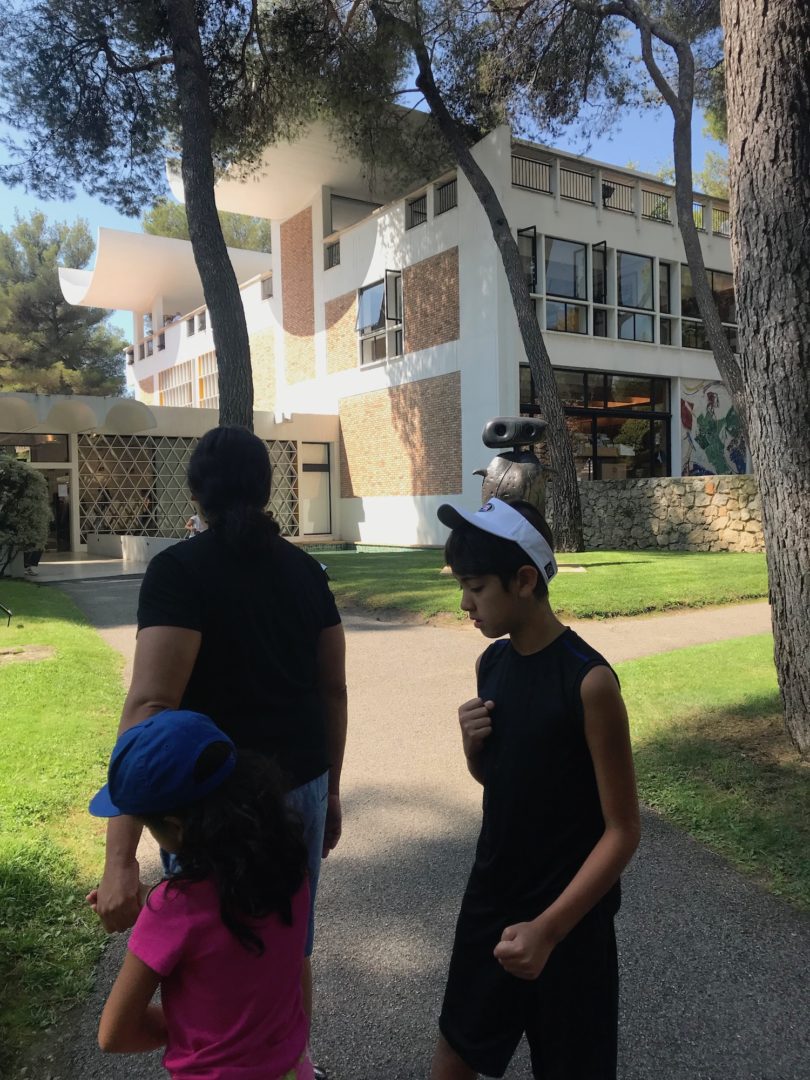

History
The Maeght Foundation was founded on the heals of a difficult period in the lives of art dealers and publishers Aimé and Marguerite Maeght. They were mourning the death of their young son. At the encouragement of their good friend and artist George Braque, they decided to redirect their grief into the creation of a private foundation in collaboration with the artists represented by the Maeghts. It was the 1950s and the Maeghts had been running a successful art gallery in post-World War II Paris. They had cultivated longstanding and deep relationships with the masters of Modernism including Henri Matisse. Their financial success enabled the purchase of land in Saint-Paul de Vence where they first built a home and later the foundation.
The Maeghts asked the Catalan architect Josep Lluís Sert to design the foundation’s building after seeing Sert’s design for Jean Miró’s studio in Palma de Mallorca. Sert designed the building in collaboration with the artists of the Maeght’s inner circle that included Joan Miró, Alexander Calder, Fernand Léger, Georges Braque, Alberto Giacometti, and Marc Chagall – all major artists of the twentieth century.
This private institution, opened in 1964 to showcase the Maeght’s private collection of modern art and was modeled on the Barnes Collection, the Guggenheim Foundation and the Phillips Collection in the U.S. The construction of a modernist building for the exhibition of modern and contemporary art was the first of its kind in France where public museums were traditionally housed in castles or other structures from the past built for different purposes but later transformed into institutions dependent on public funds. The foundation continues to be overseen by the Maeght family as a privately run institution that relies entirely on admission fees and private donations.
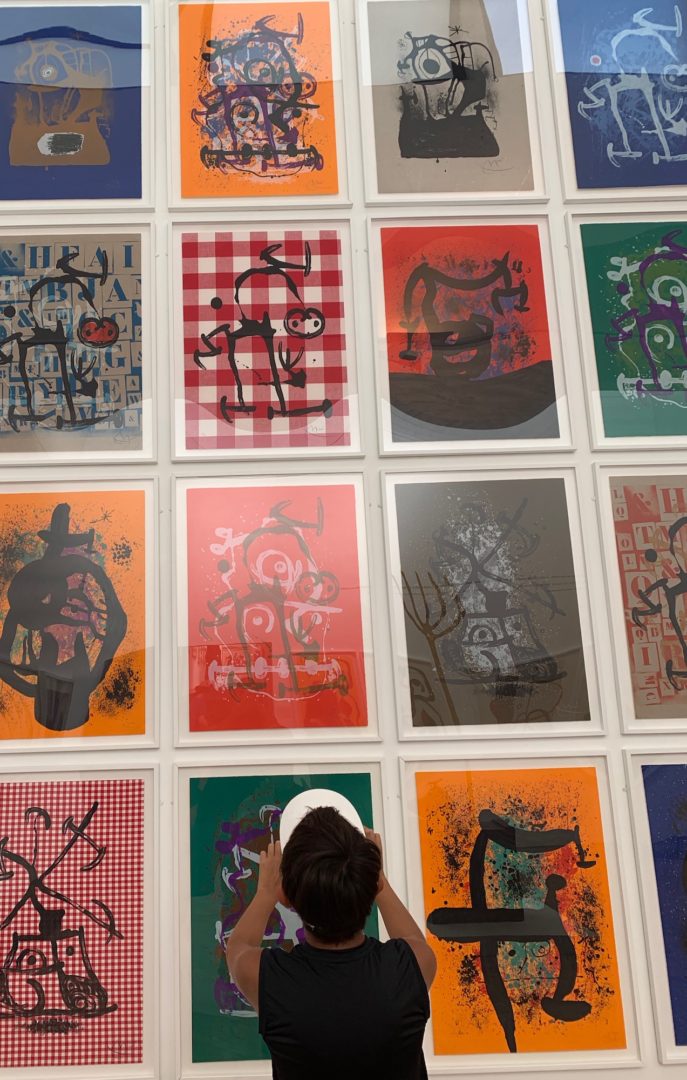

The Collection
The experience began as soon as we stepped out of the Uber and onto the property. We walked along a path and through a lush landscape filled with trees and the shadows they cast. We walked along a paved path between a number of large, outdoor sculptures scattered across the green lawns until we were standing before Josep Lluís Sert’s building. The two white curved forms that run parallel to each other along the roof are in direct contrast to the block structure of the building supporting these forms. These distinct decorative features give the building a sense of lightness, as if it is about to take flight.
The exhibition on view that day was Joan Miró. Beyond Painting. guest curated by Rosa Maria Malet, the former director of the Fundació Joan Miró in Barcelona, a building also designed by Miró’s close friend and collaborator Josep Lluís Sert. We had the opportunity to see the vibrant and extensive graphic works of Miró in gallery spaces that optimized the viewing experience. From the curved pattern of the tiles underfoot to the natural light coming in through windows set high up along the walls, our time inside was transformative. There was an easy flow from one room to the next, ensuring that we saw everything without having to backtrack or wonder if we missed something along the way. We eventually made our way through the Miró exhibition to a selection of works by other artists from the permanent collection until we found ourselves standing on the rooftop terrace under the striking waves or wings running along the roof. We admired the curves of these decorative forms while also taking in picturesque views of the surrounding nature and art.
After our visit to the rooftop, we made our way back down and outside to Miró’s Labyrinth that took us on another journey winding through the property behind the building. This multi-level outdoor space compliments this location up in the mountain with a number of breathtaking views. The pieces that make up Miró’s Labyrinth were created in collaboration with the artist’s friend, the ceramist Josep Llorens Artigas and reference Greek and Catalan mythologies. We following the path of this labyrinth marked by the white line meant to represent Ariadne’s thread that was painted along the surface of the low stone wall that wound its way down to the Giacometti courtyard. Here we stood in the middle of Giacometti’s walking figures. These Existential representations of the human form – narrow, nearly disintegrated yet elongated and elegant – were placed by the artist around the perimeter of this courtyard. Their placement gave the impression that these figures were walking towards the center, towards each other and towards us, the viewer. At least, that is what I felt as my kids ran and jumped around like maniacs burning through endless supplies of energy.
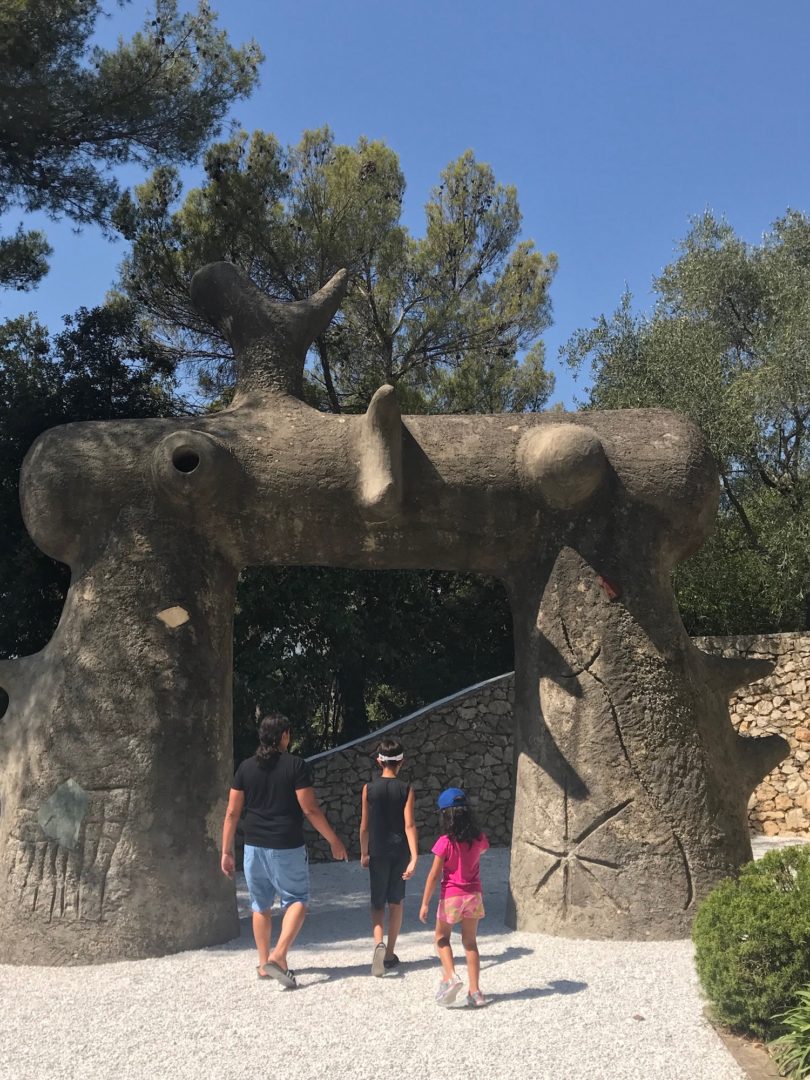
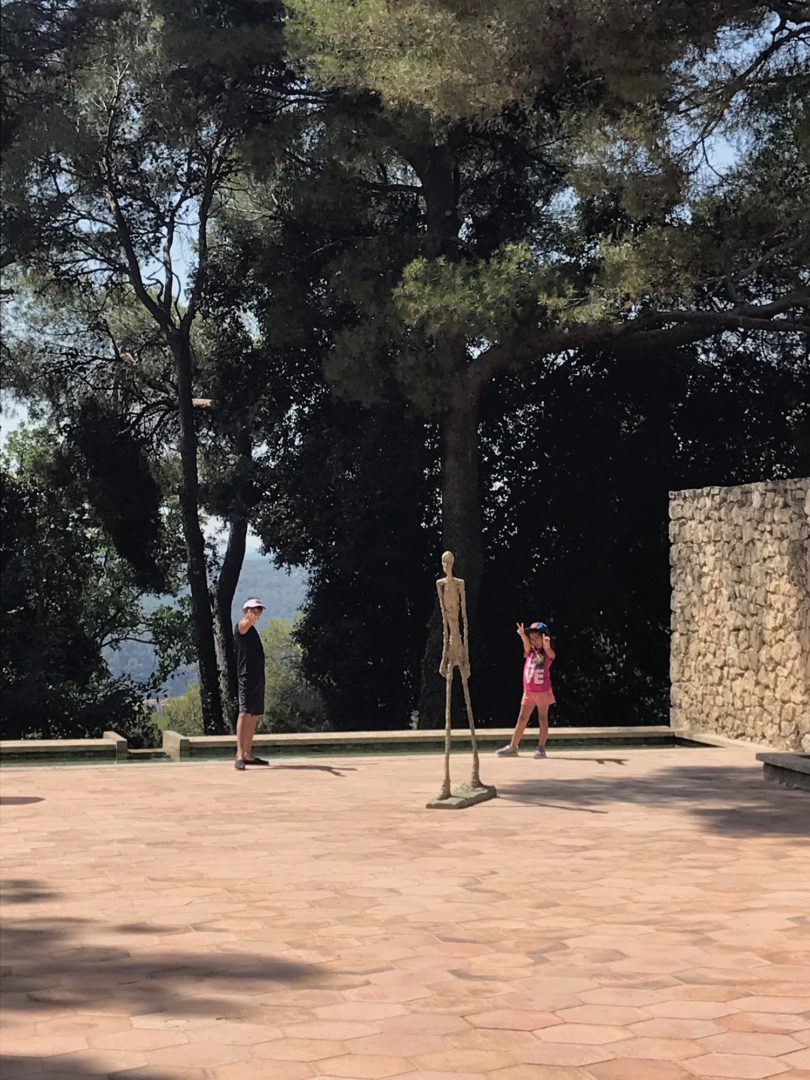
We ended our visit to the Maeght Foundation with a quick stop inside the small chapel dedicated to St Bernard, a pre-existing and consecrated building. We probably spent about two hours here and it was more than enough time to appreciate the grounds, the building, the art and the history of the space.
Saint-Paul de Vence
Just a short walk from the foundation is the charming little village of Saint-Paul de Vence. We had lunch at La Colombe d’Or, the famous meeting place for artists and thinkers who fled to this region in the 1940s. This was part of the free zone, the area not occupied during World War II. We were looking forward to this dining experience but it got off to a sour start because we had difficulty finding the entrance which made us late for a reservation that I had believed was later in the afternoon than had been arranged with the restaurant. Needless to say, feathers were ruffled and the staff was a bit on the stuffy side. We were surprised because this was the only time that we experienced less than friendly service in France. We were seated at a beautiful table in the garden where we eventually relaxed after a bottle of rosé for the adults and two plates of pasta in butter sauce for the kids.
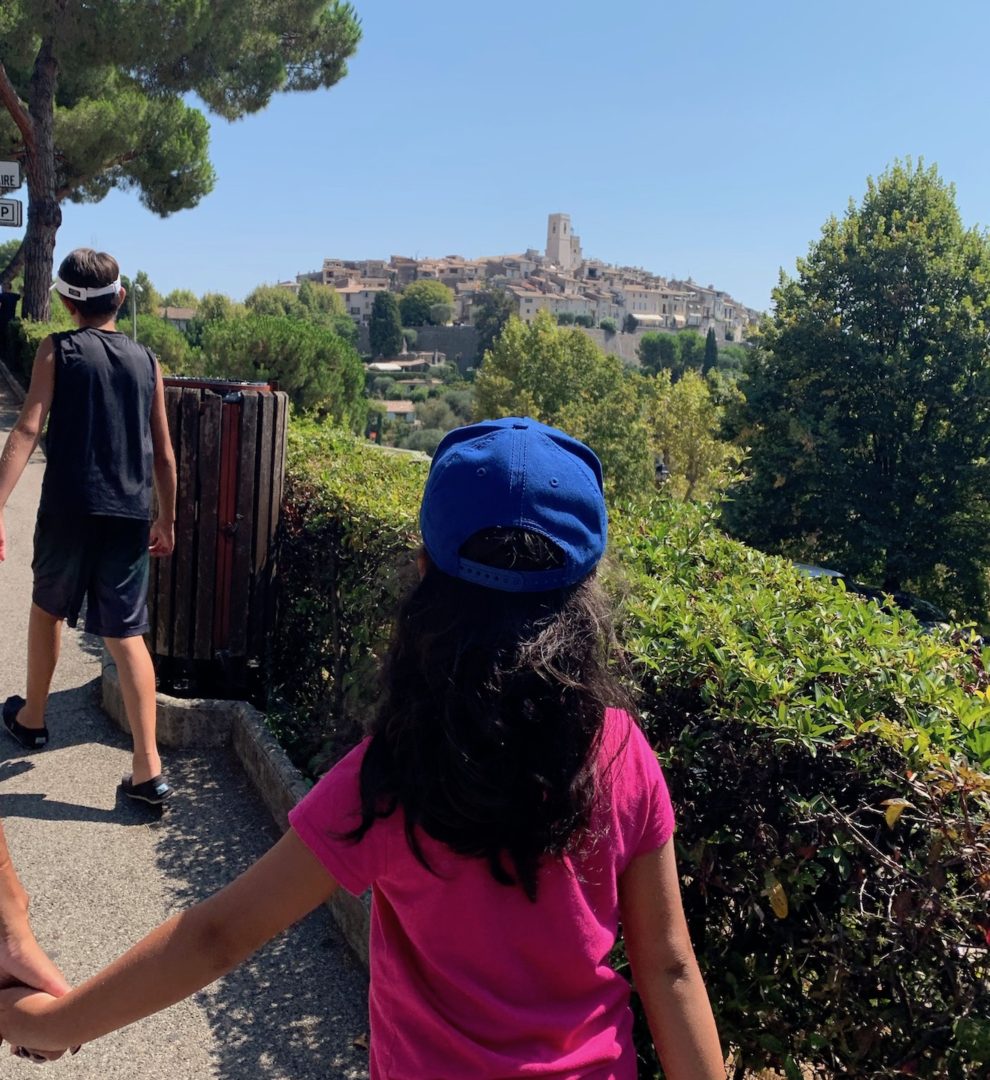
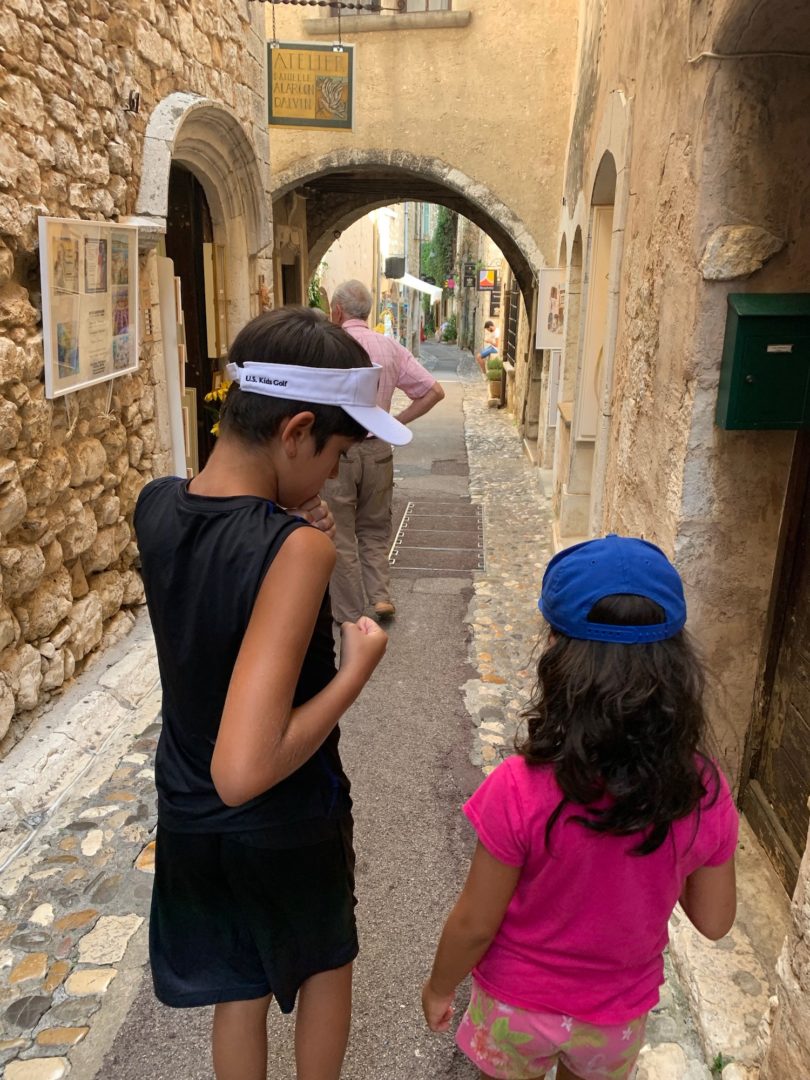
The remainder of the day was spent in the village of Saint-Paul de Vence and it was not long before we were taken away by the beauty of this special place. We wandered through small streets lined with small art galleries and interesting little shops. We walked towards the walls surrounding this village and took in some of the most magnificent views of the countryside. At one point, we found ourselves inside the wine cellar of La Cave de Saint Paul where we purchased as much wine as we could carry back to the taxi. We managed to bring these bottles back to NYC and have already indulged in some. In addition to all the pictures and special memories, each bottle of wine takes us back to this special day.

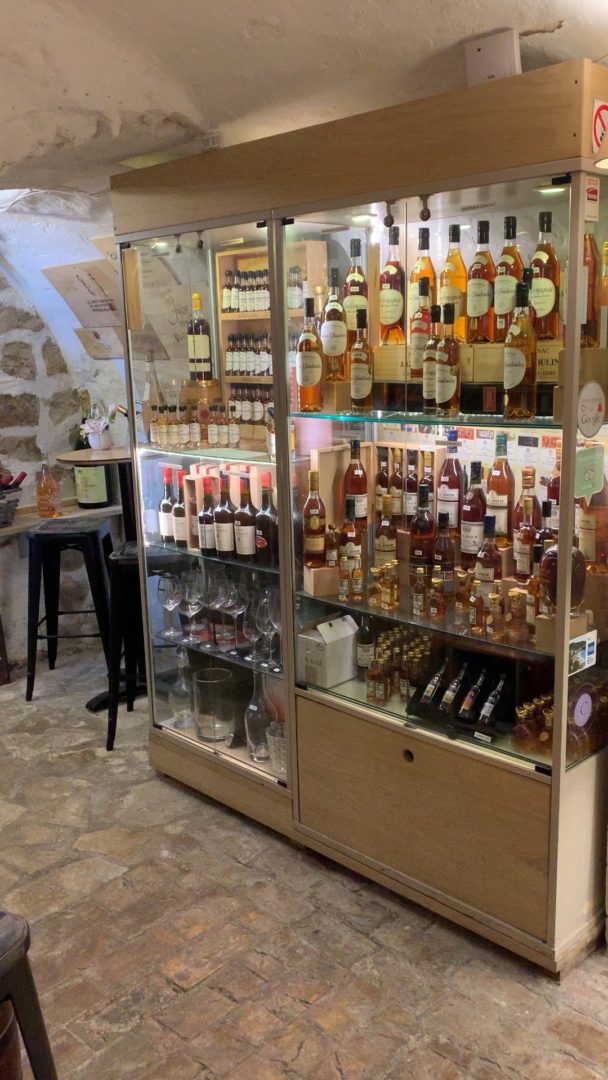
The Maeght Foundation followed by a walk through Saint-Paul de Vence is a five star experience that I highly recommend.
For more about family travel click here.
Click here if you are looking for a little guidance planning your next vacation.
Suggested Reading
| “Design; AN ARTFUL RETREAT BY THE MEDITERRANEAN” By Susan Heller Anderson, New York Times, May 17, 1981 Modernism and the Mediterranean: the Maeght Foundation by Jan Birksted, 2004 |





